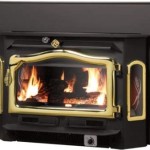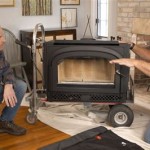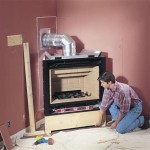Bioethanol Fireplace Insert: A Comprehensive Overview
A bioethanol fireplace insert represents a contemporary and environmentally conscious alternative to traditional wood-burning or gas fireplaces. These inserts are designed to be installed within existing fireplace openings or custom-built enclosures, providing the ambiance of a real flame without the need for a chimney, gas line, or electricity. Operating on bioethanol fuel, a renewable resource produced from plant materials, these inserts offer a clean-burning and sustainable heating solution.
Understanding the nuances of bioethanol fireplace inserts is critical for homeowners and designers seeking to incorporate this technology into their living spaces. This article will delve into the key aspects of bioethanol fireplace inserts, including their operational principles, advantages, considerations for installation, safety features, and maintenance requirements. The aim is to provide a comprehensive overview to facilitate informed decision-making regarding their suitability for various applications.
The increasing popularity of bioethanol fireplaces stems from a confluence of factors, including a growing awareness of environmental concerns, a desire for aesthetic fireplace designs without the complexities of traditional installations, and the inherent ease of use associated with bioethanol fuel. These inserts offer a compelling option for those seeking to enhance the atmosphere of a room while minimizing their carbon footprint and simplifying installation logistics.
Operational Principles of Bioethanol Fireplace Inserts
At the core of a bioethanol fireplace insert is the burner unit, a specially designed container that holds the liquid bioethanol fuel. This burner is typically constructed from stainless steel to withstand the high temperatures generated during combustion and to ensure corrosion resistance. The design of the burner is crucial for controlling the flame size, burn time, and overall efficiency of the insert.
The combustion process begins when the bioethanol fuel is ignited within the burner. The fuel vaporizes and mixes with oxygen from the surrounding air, creating a clean-burning flame. Unlike wood-burning fireplaces, which produce smoke, soot, and ash, bioethanol fireplaces emit primarily water vapor and carbon dioxide in relatively small quantities. The amount of carbon dioxide released is often compared to that produced by burning a few candles, making it a significantly cleaner alternative to traditional fireplaces.
The flame height and heat output of a bioethanol fireplace insert can often be adjusted through the burner's design or with a dedicated control mechanism. Some models feature sliding plates or dampers that allow users to regulate the airflow to the burner, thereby increasing or decreasing the flame intensity. This control functionality adds to the versatility of the insert, allowing it to be adjusted to suit different room sizes and desired levels of warmth.
The efficiency of a bioethanol fireplace insert is measured by its ability to convert the chemical energy of the fuel into heat. While not intended to be a primary source of heating, these inserts can effectively warm a small to medium-sized room. The heat output is typically expressed in British Thermal Units (BTUs) or kilowatts (kW), providing a metric for comparing the heating capabilities of different models.
Advantages of Using Bioethanol Fireplace Inserts
One of the most significant advantages of bioethanol fireplace inserts is their ease of installation. Because they do not require a chimney, flue, or gas line, they can be installed in a wide variety of locations, including apartments, condominiums, and homes where traditional fireplaces are not feasible. This flexibility opens up design possibilities and allows for the addition of a fireplace feature in spaces where it was previously impossible.
Another key benefit is the clean-burning nature of bioethanol fuel. The absence of smoke, soot, and ash eliminates the need for regular cleaning and maintenance typically associated with wood-burning fireplaces. This reduces the time and effort required to maintain the fireplace, allowing homeowners to enjoy the ambiance without the associated hassles.
Furthermore, bioethanol fuel is a renewable resource. Derived from plant materials such as corn, sugarcane, or cellulose, it offers a more sustainable alternative to fossil fuels. While the production of bioethanol fuel does have environmental considerations, it is generally considered to have a lower carbon footprint compared to traditional heating methods, especially when sourced from sustainably managed agricultural practices.
The aesthetic appeal of bioethanol fireplace inserts is also a significant advantage. Available in a wide range of designs, from sleek and modern to more traditional styles, these inserts can seamlessly integrate into various interior design schemes. The open flame provides a visually captivating focal point, adding warmth and atmosphere to any room. Many models also allow for the incorporation of decorative elements such as stones or ceramic logs to enhance the visual effect.
Considerations for Installation and Safety
While bioethanol fireplace inserts are relatively easy to install, careful planning and adherence to safety guidelines are essential. It is crucial to ensure that the insert is installed in a well-ventilated area to prevent the buildup of carbon dioxide. Although the amount of carbon dioxide produced is small, proper ventilation is always recommended to maintain air quality.
The surrounding materials must also be considered when installing a bioethanol fireplace insert. Non-combustible materials, such as stone, brick, or metal, should be used to surround the insert to minimize the risk of fire. It is important to maintain a safe distance between the insert and any flammable materials, such as curtains, furniture, or paper, to prevent accidental ignition.
Safety features are an integral part of bioethanol fireplace insert design. Many models incorporate features such as spill-proof burners, which prevent fuel from leaking out even if the insert is accidentally tipped over. Other models may include automatic shut-off mechanisms that extinguish the flame if the insert is overheated or if carbon dioxide levels exceed a certain threshold.
Proper storage of bioethanol fuel is also crucial for safety. The fuel should be stored in a cool, dry place, away from direct sunlight and sources of ignition. It is important to use only bioethanol fuel that is specifically designed for fireplaces and to follow the manufacturer's instructions for filling and refueling the burner. Never add fuel to a burner that is still hot, as this can create a dangerous situation.
Maintenance and Upkeep of Bioethanol Fireplace Inserts
Bioethanol fireplace inserts require minimal maintenance compared to traditional fireplaces. Because they do not produce ash, soot, or smoke, there is no need for regular cleaning of a chimney or flue. However, occasional cleaning of the burner and surrounding areas is recommended to remove any dust or debris that may accumulate over time.
The burner unit should be cleaned periodically with a soft cloth and a mild cleaning solution. Avoid using abrasive cleaners or harsh chemicals, as these can damage the stainless steel surface. It is also important to ensure that the burner is completely dry before refueling to prevent any water from contaminating the fuel.
The decorative elements, such as stones or ceramic logs, can also be cleaned with a soft brush or cloth. If these elements become stained or discolored, they can be removed and washed with soap and water. However, it is important to ensure that they are completely dry before being placed back into the fireplace.
Regular inspection of the insert and burner unit is also recommended to identify any potential problems. Check for any signs of damage, such as cracks or corrosion, and ensure that all safety features are functioning properly. If any issues are detected, it is important to consult a qualified technician for repair or replacement.
The longevity of a bioethanol fireplace insert depends on several factors, including the quality of the materials, the frequency of use, and the level of maintenance. With proper care and maintenance, a high-quality bioethanol fireplace insert can provide years of enjoyment and warmth.

Bioethanol Burner Chamber Insert Mini Fire Cassette The Stove House

Corner Bio Ethanol Built In Fireplace Right 60 Cm With Glass

Bioethanol Fireplace Insert Hf 2 700 Ignisial Paris Remote Controlled

White Eton Portable Bioethanol Fireplace

Ethanol Fireplace Inserts

Buy Firebox 1100cv Curved Ethanol Fireplace Ecosmart Fire

Vb2 Ethanol Burner Convert Traditional Fireplaces Ecosmart Fire

Pure Flame Bioethanol Fireplace Insert By Planika

Ethanol Fireplace Automatic Smart Remote Controlled Afire

Ethanol Fireplace Insert Conversion Kits
Related Posts








